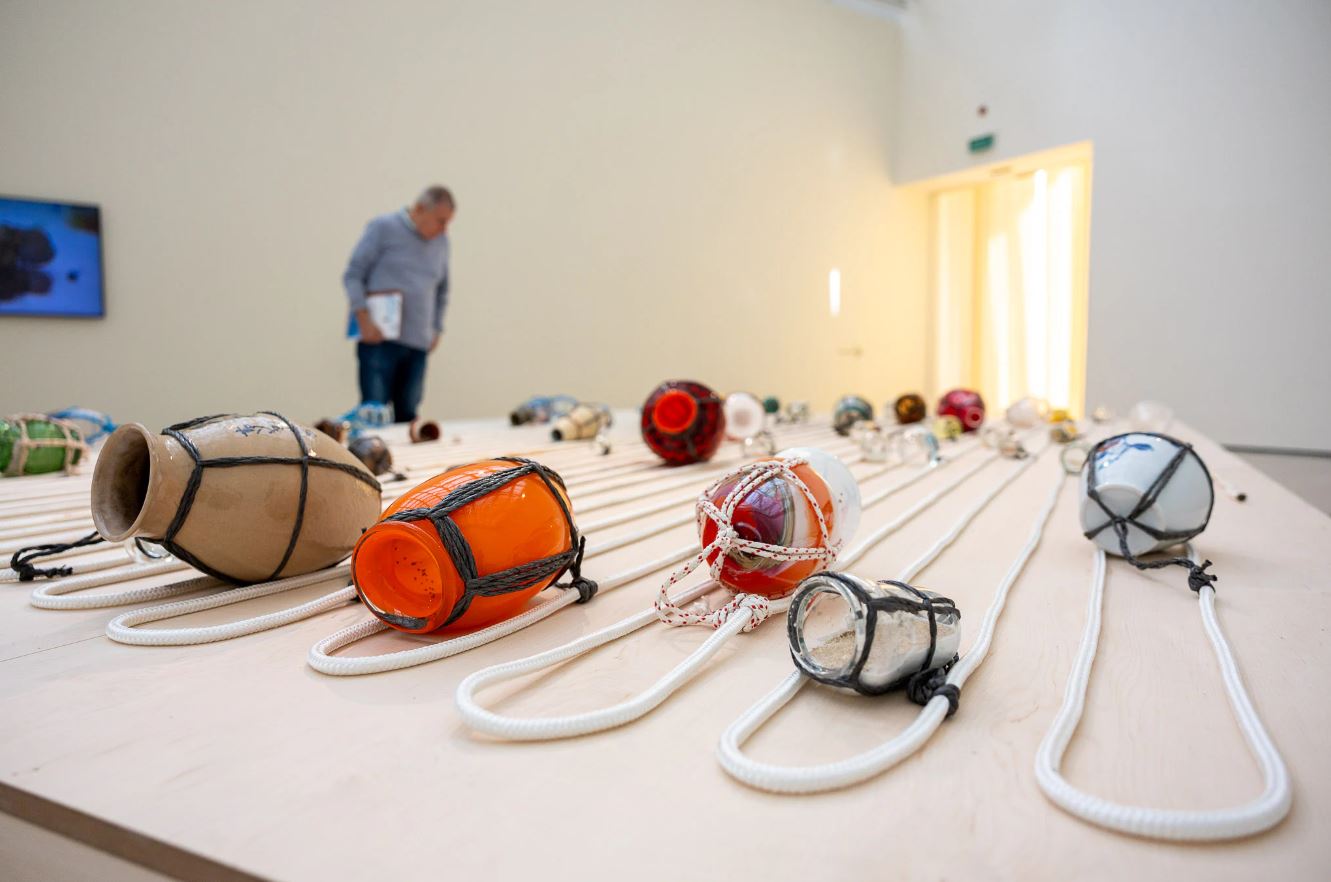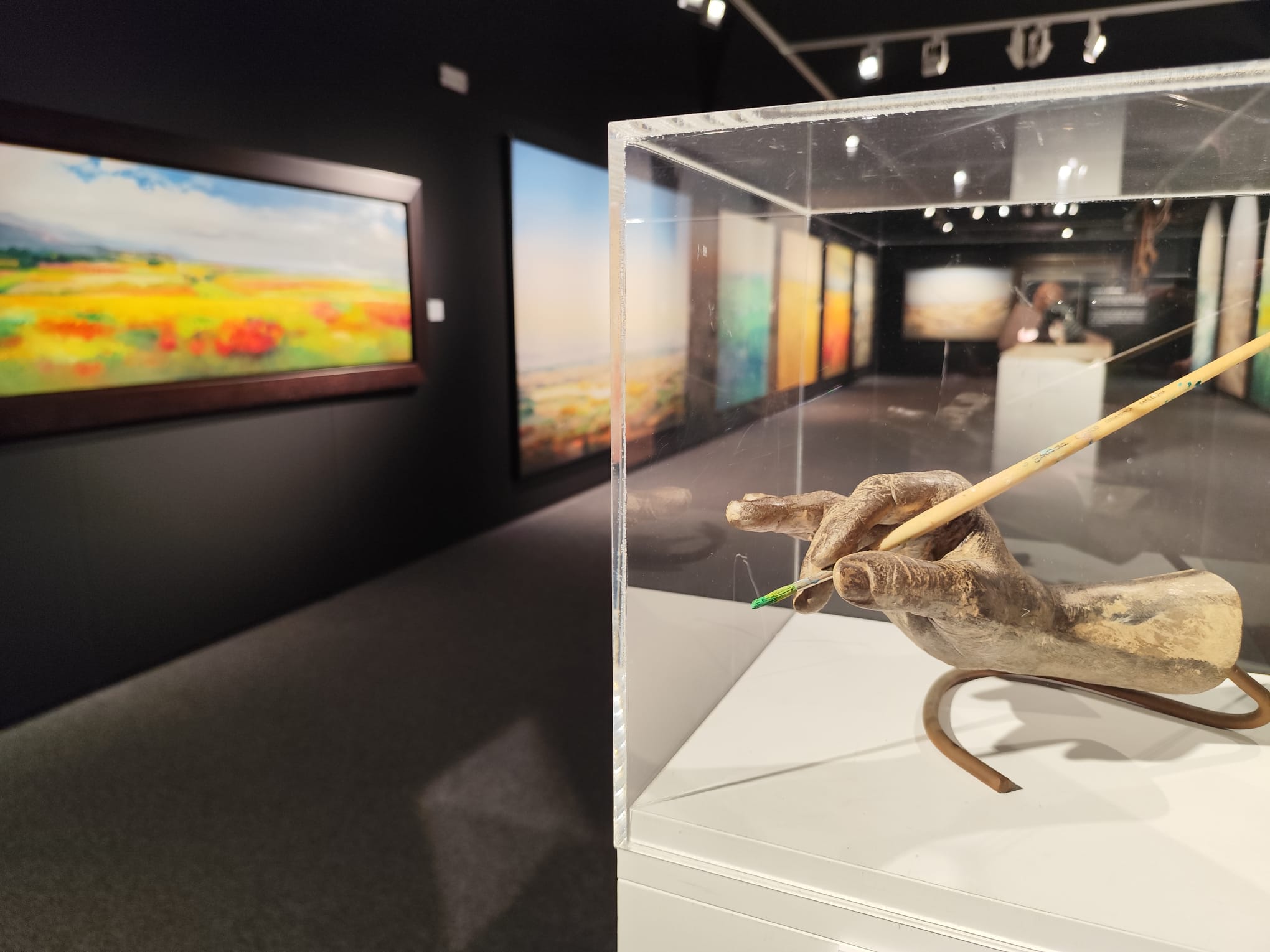
The interaction between different forms of life is the guiding thread of the work of Shimabuku, a Japanese artist born in Kobe in 1969. From a unique perspective that challenges conventional notions of art, Shimabuku presents a journey that , basically, of everyday life. His work has maintained a link with Spain through the NoguerasBlanchard gallery, but now comes his first major individual and institutional exhibition in the country, thanks to Centro Botín de Santander. Until March 9, the exhibition 'Pulpo, citrico, humano' offers a retrospective of thirty years of artistic experimentation with installations, photographs, sculptures and videos that capture unusual relationships and surprising scenarios.
Shimabuku has established himself on the contemporary art scene with a spontaneous, affectionate and often humorous style. Inspired by his own life experiences, anecdotes or everyday acts, his artistic process is born from simple questions - "What if...?" - and from an incessant curiosity that leads him to investigate unique ways to connect with his environment His work is clearly performative and often involves collaborations with different species and ecosystems. With a career that has taken him to exhibit all over the world, from biennials to group exhibitions and projects in public spaces, Shimabuku is known for transcending the creation of traditional art objects.
His works are based on interaction with the environment and a constant dialogue with the natural world, people, animals and other elements. Shimabuku moves between an almost childlike curiosity and an approach reminiscent of scientific methodology, where any trivial matter can become an artistic possibility . Thus, he seeks to establish a more empathetic and playful relationship with what surrounds him.
[row 50dc]
The exhibition presents three new works produced by the Botín Foundation in which local communities, both human and non-human, participate. The title of the exhibition refers to each of them: 'Going to meet the Octopuses of Santander' involves submerging fifty colorful octopuses in the bay of Santander to document the interaction with the local octopuses, exploring the connection between species and the its underwater environment. With 'Flying People (Santander)', in collaboration with the inhabitants of Cantabria, the artist fills the sky with human-shaped kites, creating a visual metaphor of ephemeral communities in flight. Finally, in 'Something that Floats / Something that Sinks', a series of tanks with water are presented in which autumn citrus fruits float and sink selected from the Todolí Citrus Foundation, a non-profit organization dedicated to the study and dissemination of citrus cultivation.

In addition to the pieces created especially for this occasion with the collaboration of the Botín Foundation, the exhibition includes previous works in which Shimabuku orchestrates unexpected encounters between various entities. These works reflect his nomadic spirit, as the artist travels to different places in Japan and other parts of the world to bring social and spatial experiments to life. This is the case of 'Exhibition for the Monkeys', a series of photographs documenting the descendants of Japanese macaques relocated to an arid sanctuary in Texas for a scientific experiment. Shimabuku wondered if these monkeys would still remember snow despite not having seen it for generations, so he brought them ice from a nearby gas station and observed their reactions.
Ultimately, Shimabuku's creations are born out of the ordinary and evolve slowly over time, with protagonists emerging through various experiments and adapting to new contexts and ecosystems. The artist offers us a vision of the world based on surprise and reflection, while highlighting the interdependence with the environment that we often ignore.









